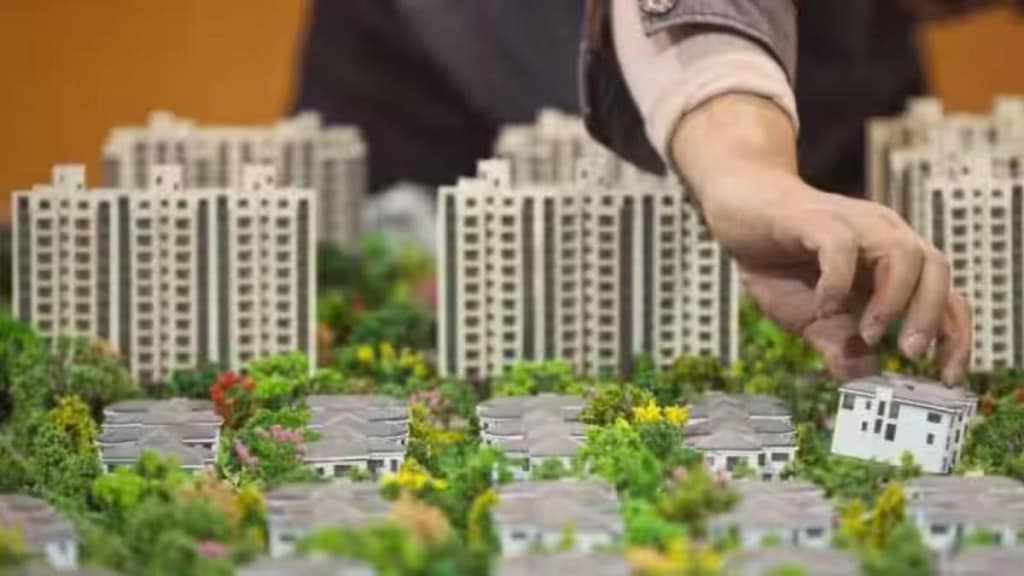Earlier this month, a Gurugram luxury housing project’s 224 luxury flats worth Rs 440 crore were sold within 15 minutes of launch. While reports suggest that demand for luxury flats in India is increasing, green-certified buildings are another sought-after segment, with buyers willing to pay more for sustainability.
“We recently saw remarkable success at Mahindra Vista, India’s first net zero energy plus waste homes, which sold over Rs 800 crore worth of inventory within three days,” Sunita Purushottam, head of sustainability at Mahindra Lifespaces, told FE.
Recent reports by CBRE Group (a real estate company) and Xynteo (a purpose-driven strategic advisory firm) have shown that green-certified office spaces have seen a substantial uptick over the years. CBRE’s report ‘India Office Figures—Q12024’, published on April 3, reveals that more than half of the newly-completed space during Q1 was green-certified, and about 63% of the leasing took place in certified assets.
“Sustainable practices in the real estate sector have taken centrestage, influencing the competitiveness of projects. Demand for green buildings is not restricted to metros alone. The financial benefits of green features, such as long-term energy bill savings, are appealing to residents and businesses in all locations,” Anshuman Magazine, chairman and CEO—India, South-East Asia, Middle East & Africa—CBRE, told FE.
The company’s February report on sustainability reveals that over the past nine years, green-certified office space in India doubled from 176 million square feet to 366 million square feet (pre-2015 to 2023), which is consistent at a 10% CAGR across top six cities, including Delhi-NCR, Bengaluru and Hyderabad.
The March report by Xynteo says residential consumers are willing to pay 5% to 10% premium for green buildings, while office occupiers are willing to pay more than 15% for green buildings and as much as 50% premium for totally net zero buildings.
Corporate occupiers are increasingly leasing green office spaces, with over 85% motivated by energy savings and sustainability targets, and 74% willing to pay higher premiums for lower emissions buildings. The survey also says 42% of India’s top seven cities’ Grade A office stock is already green-certified.
“The traction towards sustainable and green buildings is particularly evident in commercial and IT parks leasing, where green building certification such as LEED Platinum, EDGE, or WELL are often a prerequisite due to tenants’ ESG targets,” said Sanjay Dutt, MD and CEO of Tata Realty and Infrastructure.
When it comes to pricing, experts say green buildings typically command 3% to 5% higher occupancy rates than non-certified assets, resulting in leading occupiers to gravitate towards green buildings.
“Companies, mirroring societal shifts, now consciously seek projects aligned with their ESG (environmental, social, and governance) and sustainability goals,” said Abhijeet Gawde, head of business development & marketing, Godrej Construction.
The reason for consumers’ willingness to pay more for green is rooted in the growing challenges of urban dwellers in terms of health and well being. “The Xynteo survey reveals that urban dwellers are tired of bearing the brunt of the challenges of the urban crisis and are looking for spaces to inhabit that can provide a quality of life they expect, even if it means paying a premium, because that premium offsets the direct and often indirect costs of health and wellbeing that they would need to bear otherwise,” said Aneesh Jain, principal, Xynteo.
Awareness towards green buildings and sustainability is particularly prominent among young buyers in the age group of 35-45 years, say experts. “This cohort demonstrates a strong awareness and consciousness of environmental issues and actively seeks out properties that integrate green initiatives,” said Dutt of Tata Realty and Infrastructure.
“Young buyers are focused on reducing their carbon footprint and prefer homes that reflect their commitment to sustainability. These homes are energy-efficient, use eco-friendly materials, and incorporate measures to lessen environmental impact,” concurred Sunita Purushottam, head – sustainability – Mahindra Lifespaces, a real estate developer.
Older home buyers are also not quite away from the idea of sustainable living choices. “The interest in sustainability is pretty broad-based and even older homebuyers are interested in living in such projects,” said Santhosh Kumar, vice-chairman, Anarock, a real estate services company.
As per a report by KPMG and Colliers, Bengaluru has the largest stock of green-certified buildings and Delhi NCR ranks second, followed by Hyderabad, Mumbai, Chennai, and Pune. However, experts said there indeed is growing interest in Tier 2 and Tier 3 cities also for modern lifestyles and green buildings.
“This shift is propelled by the migration of IT companies to locations such as Bhubaneswar, Kochi, Pune, Mangalore, Nasik, Nagpur, and Greater Noida. While metros presently host a majority of non-IT tenants, the increasing emphasis on ESG criteria is poised to amplify the demand for green buildings across all regions in the foreseeable future,” explained Dutt of Tata Realty and Infrastructure.
“Green buildings are no longer a ‘good-to-have’ concept, but a necessity for developers looking to secure a sustainable future,” said Magazine of CBRE, adding that several state governments are offering incentives for green building practices to reassure developers in Tier 2 and Tier 3 cities about the potential return on investment.
“In wake of rapid urbanisation in Tier 2 & 3 cities, it’s not just about crafting policies and operations; the essence lies in weaving sustainability into the infrastructure,” noted Gawde of Godrej Construction.
